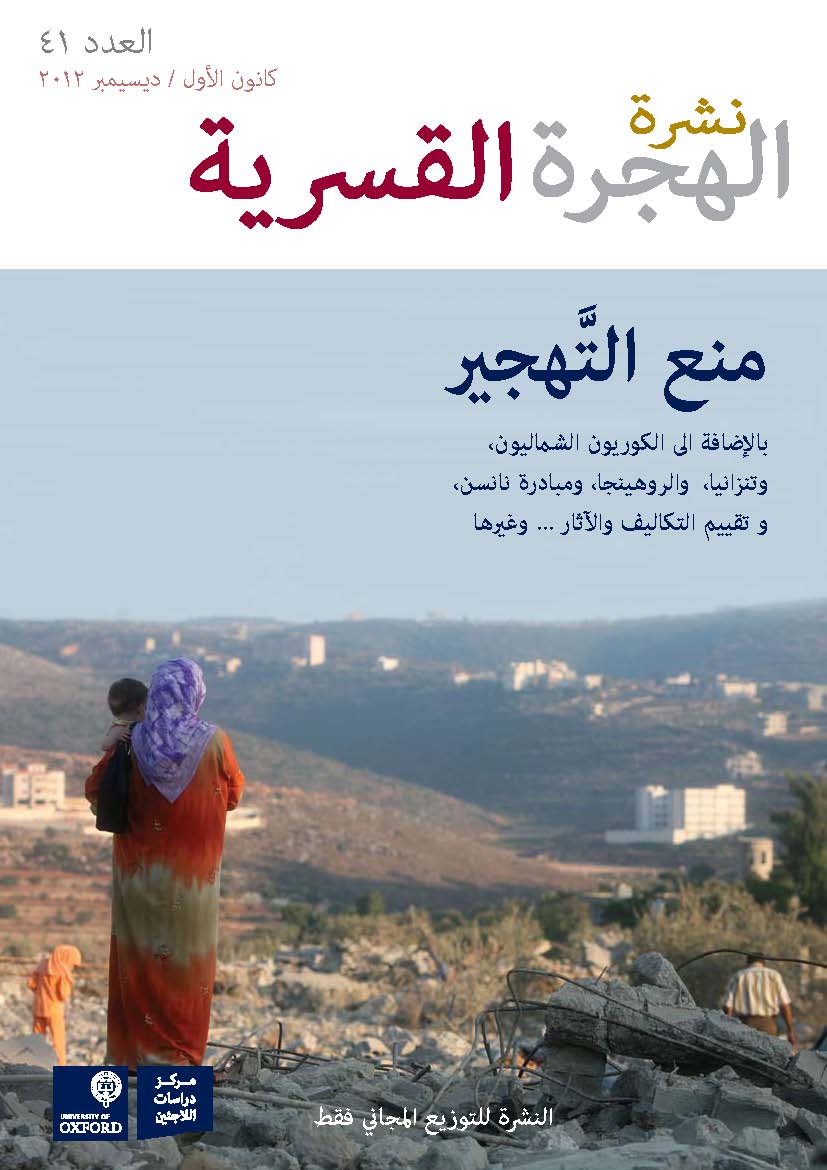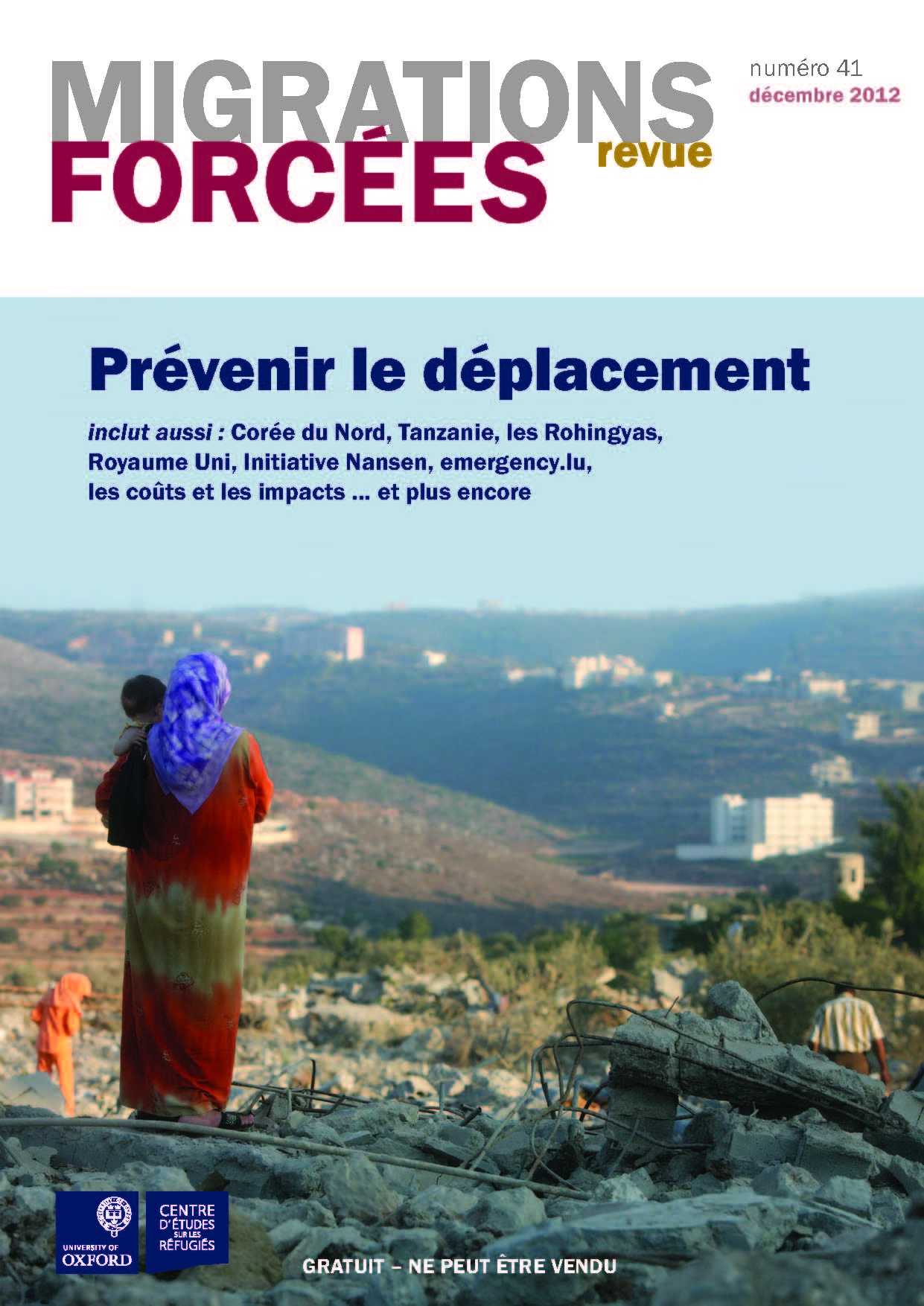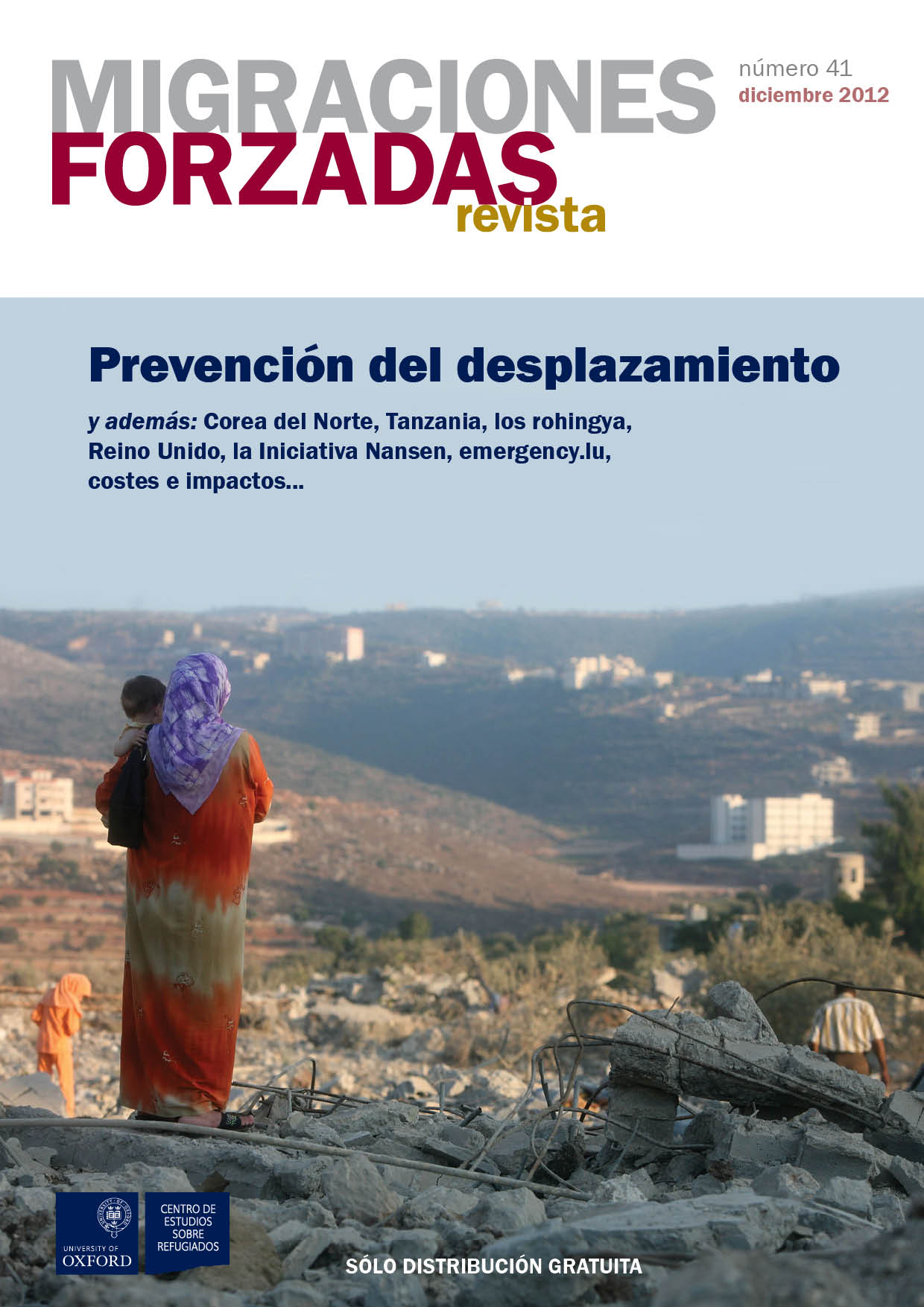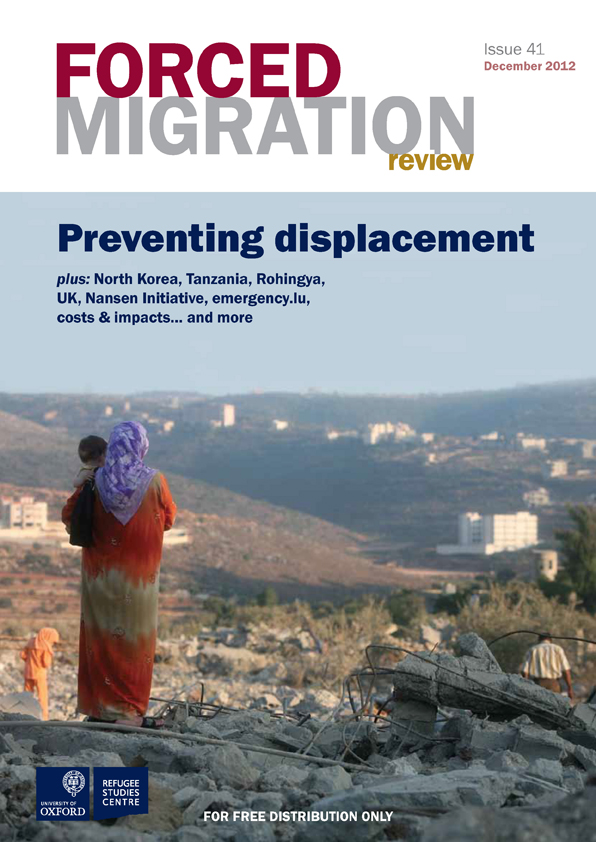Preventing displacement
The figures speak for themselves. As of December 2011, more than 26 million people were internally displaced, forced from their homes by armed conflict and insecurity, while millions more had sought refuge abroad. In addition, an estimated 15 million people…
The history and status of the right not to be displaced
In 1993, in the context of the huge displacement crisis in the former Yugoslavia, UN High Commissioner for Refugees Sadako Ogata spoke for the first time on the ‘right to remain’. In addressing the UN Commission on Human Rights she…
International Humanitarian Law: a short summary of relevant provisions
The law of armed conflict – also known as international humanitarian law (IHL) – is the body of international law that most clearly codifies binding standards for the prevention of displacement. IHL is not concerned with the lawfulness or otherwise…
To prevent or pursue displacement?
The perception of displacement as the failure of outsiders to prevent civilians being driven from their homes rests on several arguable assumptions: firstly, that displacement should be prevented, not pursued; secondly, that displacement can be most influenced by outsiders, not…
Driving displacement: explosive weapons in populated areas
Forced displacement has many drivers but one of increasing concern is the use of explosive weapons in densely populated areas. Whether in Gaza during Operation Cast Lead in December 2008 to January 2009, during the final gruelling stages of the…
Predicting disasters and protecting rights
Disaster-related displacement affects millions of people every year[1] and is determined by multiple factors: the magnitude or intensity of the hazard, the number of people and homes exposed to it, and the level of vulnerability affecting their coping capacity and…



